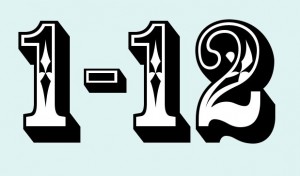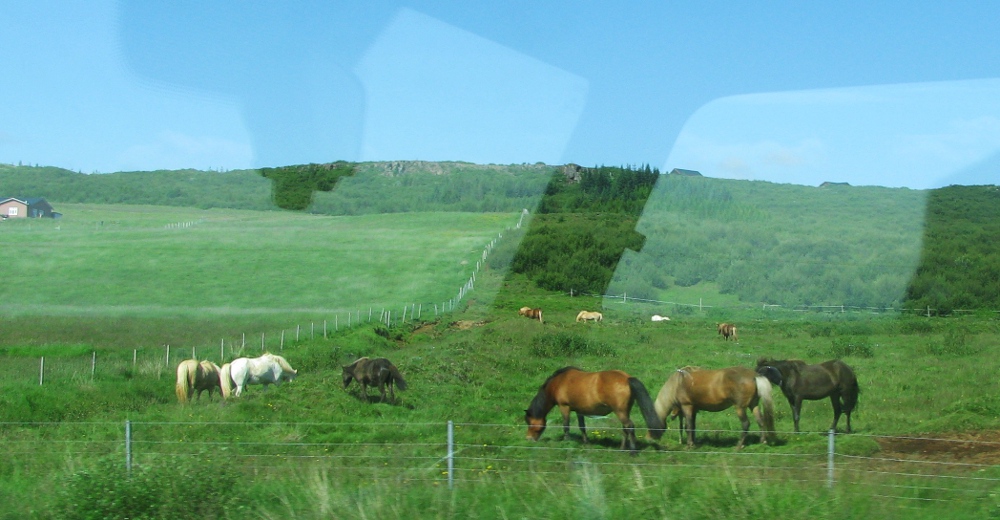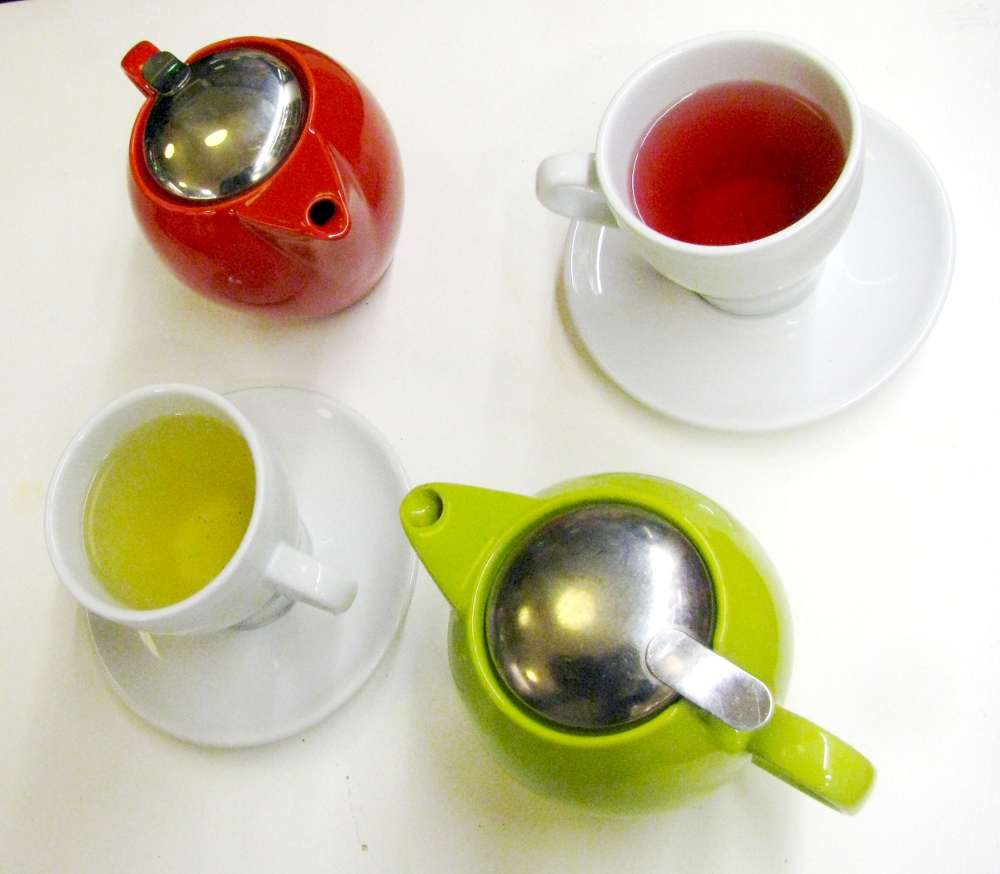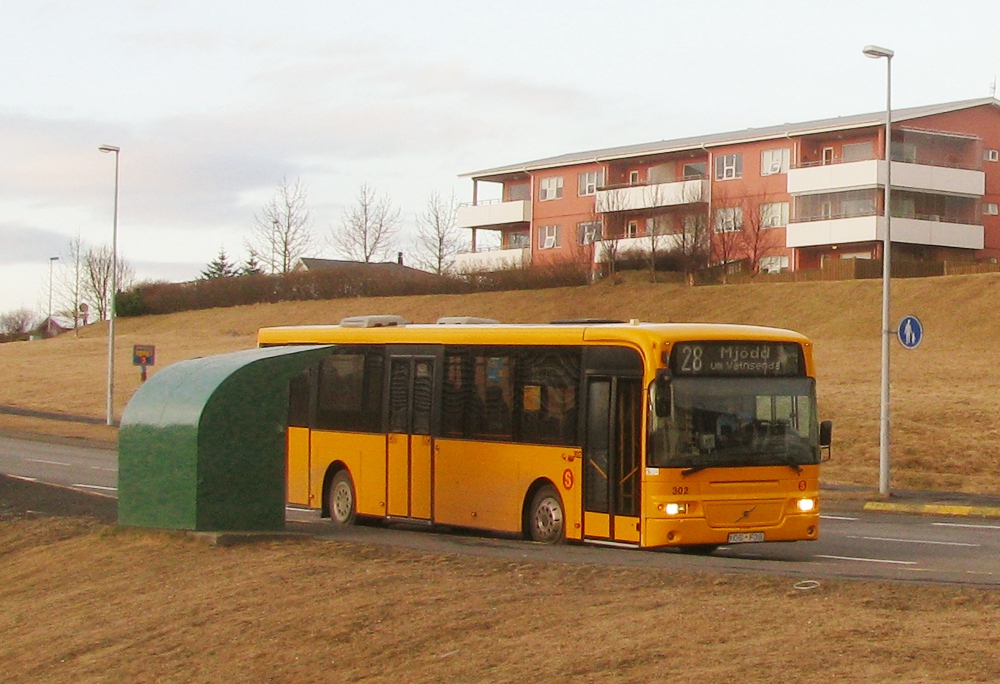How is a bus like a deck of cards? Posted by hulda on Jan 24, 2014 in Icelandic grammar, Uncategorized
 Like mentioned in the previous post, counting in Icelandic is no simple matter, especially when you’re quickly trying to come up with a sentence that includes a number. I doubt one blog post is even enough to cover the whole counting problem, but let’s look at the basics at least. The good news: the only numbers that will give you trouble are 1-4. Bad news, they give you a whole lot of trouble! As a joker bad news… there are actually more than just one set of numbers in Icelandic.
Like mentioned in the previous post, counting in Icelandic is no simple matter, especially when you’re quickly trying to come up with a sentence that includes a number. I doubt one blog post is even enough to cover the whole counting problem, but let’s look at the basics at least. The good news: the only numbers that will give you trouble are 1-4. Bad news, they give you a whole lot of trouble! As a joker bad news… there are actually more than just one set of numbers in Icelandic.
 How many white, brown or black horses can you see?
How many white, brown or black horses can you see?
Gender
First of all the form you use must respond to the gender of the noun, of which you have three choices: masculine, feminine or neuter. One horse is einn hestur (M), but one rose is ein rós (F). One man is einn maður (M), one woman ein kona (F), and one child eitt barn (N). The plural has likewise three gender forms: tveir menn, tvær konur, tvö börn.
Plural
Good news! All the numbers that aren’t 1 have only plural forms! Now your only problem is related to the fact that nouns are sometimes also singular- or plural only. The word for “a group of people/folk”, fólk, exists only in singular, therefore you can never use any plural form with it – tvö fólk just doesn’t sound right. This one still sounds logical, but what about the word coffee, kaffi? It also exists in only singular form – so how on earth do Icelanders order more than one coffee at a time?
Let’s confuse you even more: the answer to the above is that you order two coffees by saying f.ex. “ég ætla að fá tvo kaffi“. There aren’t any typos in that sentence, I really did mean to use a masculine form of number two with a neuter noun. This is where Icelandic takes the same approach as English does – you wouldn’t ask anyone to give you “two cinnamons” in English, you’d ask for two sticks of cinnamon, or two jars of cinnamon, two spoonfuls etc. Icelanders, when ordering coffee, are silently adding the word –bolla (M, plural, Þf./acc.) after the word kaffi, they just drop it off as unnecessary when they place an order, and in this way the sentence “ég ætla að fá tvo kaffi(bolla)” suddenly makes a lot of sense.
If you instead ask for “tvö kaffi“, using the neuter form, people will still easily understand you and won’t think of it as blatantly wrong. It will just sound a bit different from what they’re used to hearing.
 Ég ætla að fá tvö te – the coffee example works well for coffee but not so for tea!
Ég ætla að fá tvö te – the coffee example works well for coffee but not so for tea!
Case
Now we’re getting to the real fun – like in the example above sometimes you’ll have to use accusative or dative, or even genitive forms of the numbers. Three day’s journey, for example, is þriggja daga ferð. There seems to be no particular reason to the case form, it’s just the one that’s always used when speaking of the length of time by days or hours. You’ll come across plenty of these strange, inexplicable set case forms, but just take them as they come and learn them by heart and you’ll be fine.
Most often you’ll easily see the reason for using a particular case, however. The verb fá (= to get, to receive) takes þolfall (= accusative), therefore a good rule of thumb for ordering anything at all is that you’ll always use that one. Besides verbs prepositions also define case, for example til (= to, towards) will always be followed by genitive, no exceptions. More info on prepositions and the cases they take can be found here and here.
It would be difficult enough if this was all you needed to learn, but sadly Icelandic has at least two counting systems, this one and one that’s used to refer to buses and the numbers of playing cards. You don’t take strætó þrír, you take þristurinn. Interestingly enough bus number one can likewise be called ásinn (= ace)! The only big difference between counting cards vs. buses is that buses are always spoken of in definite form whereas cards can vary. Here they are, just in case:
Ás (= ace/bus 1)
Tvistur (= two/bus 2)
Þristur (= three/bus 3)
Fjarki (= four/bus 4)
Fimma (= five/bus 5)
Sexa (= six/bus 6)
Sjöa (= seven/bus 7)
Átta (= eight/bus 8)
Nía (= nine/bus nine)
Tía (= ten/bus ten)
Ellefan (only for buses)/Gosi (= jack, only for cards)
Tólfan (only for buses, after 12 the numbers return to normal – þrettán, fjórtán, fimmtán…)/drottning (= queen, only for cards)
Kóngur (= king, only for cards)
This is how they’re pronounced. 😉
Ljótu Hálfvitarnir (= Ugly Half-wits) is one of the most bizarre and hilarious bands I’ve ever come across in this country or any other. They’re not very well known outside of Iceland, possibly because they only sing in Icelandic, but to a language student they’re a great find! They originate from Húsavík up north and got together in the mid-80’s, and have since made four albums together if my memory serves. Their lyrics are often full of puns and somewhat Icelandic sense of humour.
Lukkutroll (song here)(lyrics here).
Fyllibyttublús (song here)(lyrics here).
Bjór meiri bjór (song here)(lyrics here).
You can also get a small sample of their newest album Appelsínugula platan here!
All photos in this entry belong to me.

Build vocabulary, practice pronunciation, and more with Transparent Language Online. Available anytime, anywhere, on any device.
About the Author: hulda
Hi, I'm Hulda, originally Finnish but now living in the suburbs of Reykjavík. I'm here to help you in any way I can if you're considering learning Icelandic. Nice to meet you!







Comments:
jean wolfgang:
Could you enlighten me on a couple of phrases? I’m trying to figure out the meaning of “allt að” as in “allt að 20 prósent”. I’m torn between “at least” and “all but”, which are kind of opposite meanings.
The other phrase is “fyrr en upp úr aldamótum.” Would this be best rendered as just “until the turn of the century” or could it be “until just after…” or “until just before….”?
Takk.
hulda:
@jean wolfgang First of all, my apologies that this answer took so long, I hope I’m not too late! “Allt að” hints at “up to but no further” or “at most”, so the example sentence could translate f.ex. as “up to 20%”. The second example means “until after the turn of the century”.